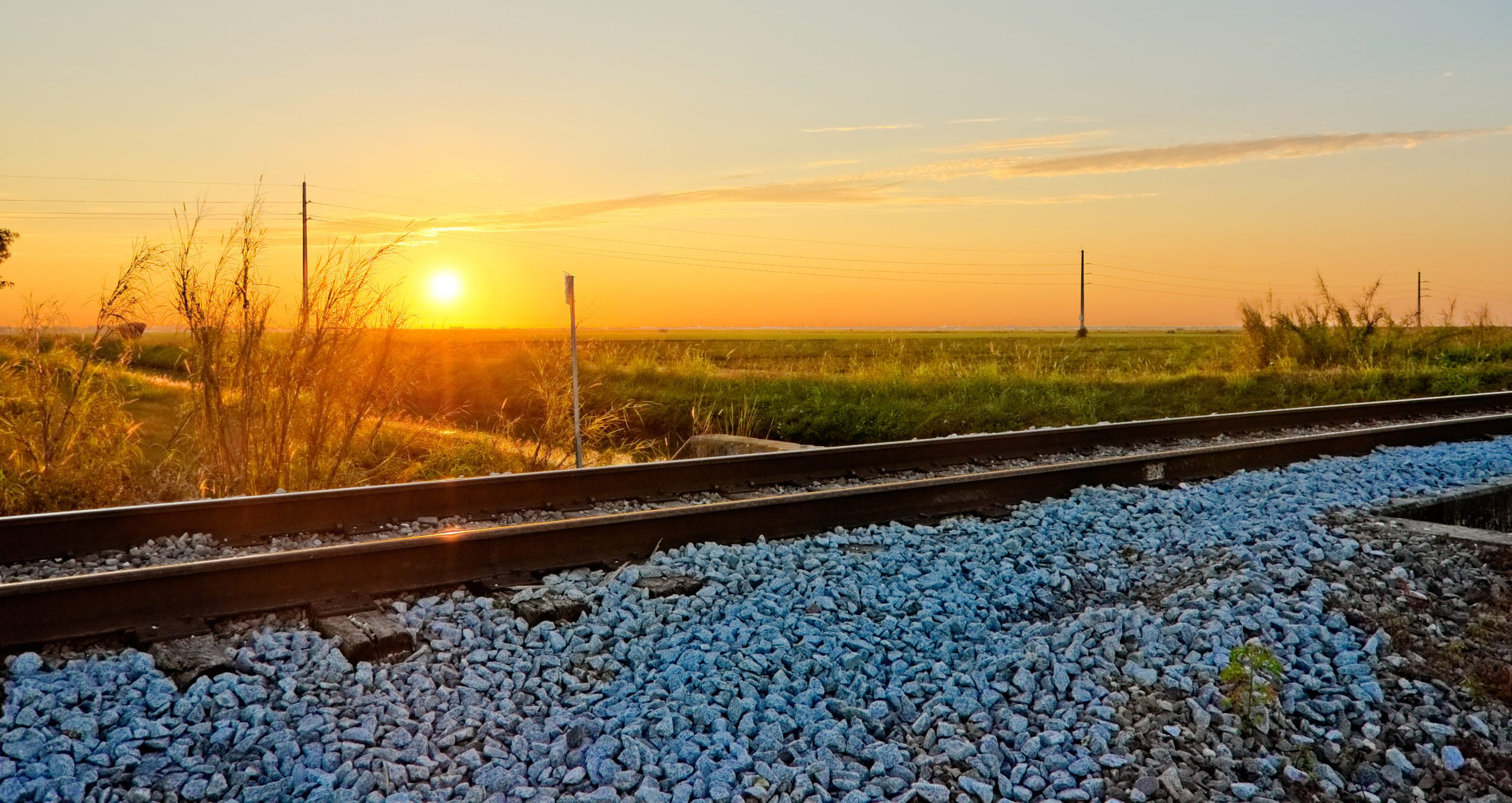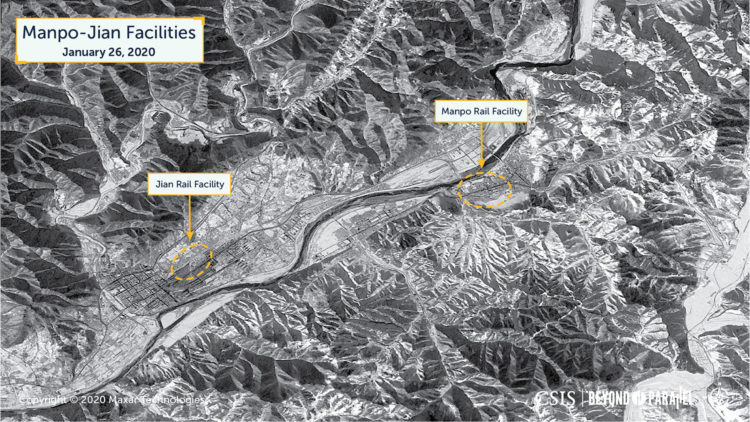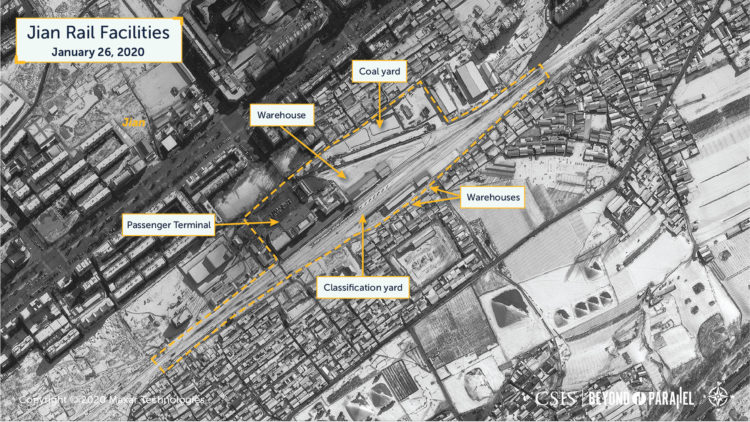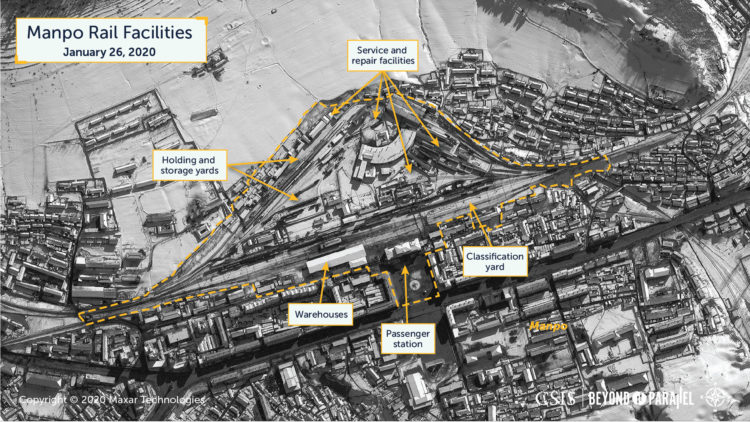
Making Solid Tracks: North Korea-China Railroad Crossing at Manpo-Jian
New Original Analysis
South Korea’s April parliamentary elections delivered a landslide victory to President Moon Jae-in’s ruling party. Widely considered as a midterm referendum on President Moon, this electoral victory will breathe new life into his administration’s heretofore stalled diplomatic efforts with North Korea, a key pillar of which is inter-Korean railway cooperation.
Inter-Korean railway cooperation had faced the prohibitive headwinds of a diplomatic impasse and international sanction restrictions throughout 2019 and into the first quarter of 2020. Despite little progress in resolving these roadblocks, South Korea has seized the opportunity of the ruling party’s new electoral mandate with a special ceremony on April 27 aimed at renewing South Korea’s commitment to inter-Korean railway cooperation. The ceremony took place at the South Korean Jejin rail facility at the currently unconnected railroad crossing to North Korea’s Kamho rail facility.
Should on-the-ground progress get back on track and inter-Korean cooperation result in the re-connection of the railways in North and South Korea, the rail networks of the Korean peninsula can then be joined with those across the Eurasian continent through China and Russia. Over the course of his administration, President Moon has been seeking to build on South Korea’s longstanding, albeit intermittent, conversations and aspirational cooperation commitments with China and Russia to plan for future integration of their railway networks.
In the context of South Korea’s renewed efforts in inter-Korean railway cooperation, the Manpo-Jian railroad crossing (41.155090° 126.273282°) is located on the border with China, in the north central section of North Korea’s Chagang province. This crossing consists of both the rail facilities at Jian and Manpo and the Manpo-Jian railroad and road bridges across the Yalu River.
While considered by most as a secondary or even tertiary crossing, the importance of this railroad crossing does have the potential to dramatically increase should significant Chinese military assistance resume as the crossing is within 100 kilometers of some of the most significant military related production cities in North Korea—Kanggye, Pyorha-ri, Chonchon, etc.
The Jian rail facility encompasses approximately 0.1 square kilometers and consists of a small passenger station and freight classification yard, several freight warehouses and unloading docks and a small coal yard for local use. There are no significant rail servicing or repair facilities at Jian.
In contrast, the Manpo facility encompasses 0.14 square kilometers—making it physically the largest North Korean rail facility on the Chinese border. The facility consists of a freight classification yard, passenger terminal, storage/holding yards, large locomotive and rail car repair and servicing facilities and several support facilities.
As noted in our previous report the Jian rail facility is small and does not appear to be very active. Recent satellite imagery from January 20, 2020 continues to support this assessment and no locomotives or rail cars were observed here. The Manpo rail facility which has previously been assessed as being relatively active year-round remains so in the same January 20, 2020 satellite image. There are approximately 150 locomotives and rail cars of various types present in the latest image, which is notably higher than the rates of 90-125 observed during 2018-2019. The reason for this elevated number is presently uncertain. No significant development of rail related infrastructure is noted at either facility in the January 26, 2020 satellite image.
Once the Korean peninsula’s railways are reconnected, a long and significant modernization process will need to take place to fully integrate the systems in a commercially viable way. Physical track infrastructure varies greatly, signal systems differ, and clearances for stations are not compatible. While South Korea and China use standard 1,435 mm gauge track, Russia uses a gauge of 1,520 mm. The North Korean systems use a range of gauge widths, but 87 percent of its tracks are 1,435 mm. Supporting infrastructure such as communication, energy grids, and even emergency response systems also need to be modernized and harmonized. These projects will all be costly and time intensive.






